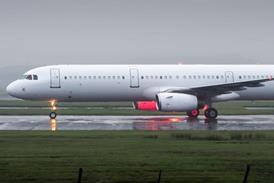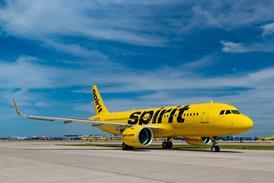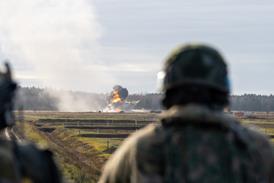Europe's Single Sky air traffic management reform is beginning to take shape, but as ever, it is political rather than technological barriers that bar the way to success
Europe's air traffic management (ATM) is in a transition that promises fewer delays, increased efficiency and, it is to be hoped, lower user charges – in theory at least. Five years on from the launch of the European Commission's Single Sky initiative to reform the region's fragmented and inefficient airspace, many of the key issues remain in the air, not least the exact role of the region's ATM co-ordinator Eurocontrol and how Europe is going to move to a system based around user needs rather than national boundaries.
Single Sky was possibly the most successful policy initiative of former EC transport commissioner Loyola de Palacio, setting the framework for a much-needed harmonisation of Europe's fragmented airspace. With every one of Europe's 25 member states effectively having developed its own ATM system, introducing some form of commonality of systems and equipment is clearly a priority.
Eurocontrol, equipment suppliers, and the Commission are working on the Single European Sky implementation plan (Sesame) with the aim of developing an "ATM master plan" for the next two decades to be implemented from 2007. Eurocontrol says this will provide a next-generation ATM system and a "quantum leap" in performance. The organisation has managed to gain TEN-T (Trans European Network – Transport) funding for the master plan.
While welcoming the reform process, IATA still has a number of concerns, not least with the costs involved. "Technically, people can move forward. What worries us is the business case for this," says IATA's director for industry charges and taxation Jeff Poole. "This is a theoretical, technical exercise," he says, adding that Eurocontrol's suggestion that breakeven will not come until 2018 is a major concern. "We need clear deliverables. Instead of which, we have an act of faith."
Poole's main criticism is that much of the new technology will be sitting on top of existing technology. "The legacy systems are not being turned off," he says. "There is a real case study going on with this at CEATS," he adds, referring to the Central European Air Traffic Services programme.
Cross-border project
After 11 years of talks, CEATS, a cross-border project covering eight mainly central European Air Navigation Service Providers (ANSPs) led by Eurocontrol, is still on the drawing board after much political wrangling. This is in many ways a reflection of the trend in recent years for the more progressive European service providers to move towards commercialisation.
As a result, the old institutional framework, based around state control, is coming under pressure. "The philosophy of senior management, often from outside the industry, has installed more business principles," Alexander ter Kuile, secretary general of the Civil Air Navigation Services Organisation (CANSO), says. This has major implications for the design of airspace, as providers are increasingly seeing their peers as competitors. Eurocontrol itself falls within this category of potential competitor since it is involved in service provision, whether it be through the central flow management unit (CFMU), the Maastricht air traffic control centre, or, in theory, CEATS.
A dramatic sign of the move towards commercialisation is shown by the decision by the German government late last year to privatise DFS, the German service provider. Germany is going even further than the UK's National Air Traffic Services (NATS), where 49% of the shareholders are in the private sector. For DFS the figure will be around 70%.
More pertinently from an airline point of view perhaps, individual ANSPs are taking the lead in developing cross-border co-operation. Most recently, NATS and the Irish Aviation Authority announced plans last year to develop a UK/Ireland functional block of airspace. Aviation and navigation consultancy Helios Technology – which has also been appointed by the EC to provide technical support to the Industry Consultation Body (ICB) for Single Sky – will present a study into the proposal in May. This will consider the impact of the Single Sky regulations, the flexible use of airspace, and joint safety and performance management.
"This development is very much in line with the ambitions of the European Single Sky and we are keen to demonstrate that we are serious about achieving that," says Paul Barron, chief executive of NATS.
The Swedish and Danish ANSPs are even further down the road to consolidation, and are in the process of creating a 50:50 joint venture, with the Norwegian and Finnish providers also expected to be involved at a later date.
The Scandinavians are fortunate in that the transnational nature of the tri-national carrier SAS means a cross-border regulatory system is in place.
This is not the case in the rest of Europe. One of the defining pieces of the Single Sky legislation was its demand that regulatory and service provision should be separated. However, with ANSPs now examining cross-border alliances, CANSO is demanding that regulation is carried out at European level, and the Commission seems to be thinking along similar lines, with plans to push forward proposals that would see the European Aviation Safety Agency (EASA) take on the role of ATC overseer.
Not surprisingly, perhaps, CANSO is also calling for an end to the current arrangement whereby Eurocontrol straddles both the regulatory and provider sides of the equation. At the moment, its functions range from supporting the EC in drawing up the rules for Single Sky; supporting the national authorities with activities such as the performance review commission; providing a central charging service and supporting service providers through CFMU. These are in addition to running the Maastricht control centre, a research and development centre in Britanny and a training centre in Luxembourg.
In an increasingly commercial world, CANSO wants to see a clarification of Eurocontrol's role. "We need a level playing field," says ter Kuile. "Airlines wouldn't accept competing against a carrier that got things free of charge, and neither should Europe's ANSPs."
Thaw in relations
Ter Kuile has been calling for airlines to direct more of their fire on to the institutions that have set this framework, rather than concentrating on providers. "It can't all be stick, stick, stick, we need the carrots as well," he argues.
The second half of 2004 seems to have witnessed a thaw in relations between Europe's ANSPs and airlines. In May last year, IATA's Poole spoke at CANSO's annual general meeting on the need for ANSPs to add cost efficiency to the usual mantra of performance, efficiency and safety. At the IATA annual general meeting in June, the organisation pointedly refused to provide its usual ANSP award. Poole then attended a CANSO working group, while IATA director general Giovanni Bisignani went to a recent high-level industry meeting of CANSO members and technology providers.
Work towards a benchmarking system is in progress, but here, too, IATA is optimistic that things are heading in the right direction. "What we are trying to do is get clearly credible and acceptable benchmarks in place for eight to 10 key performance indicators," says Poole. The aim is to develop what IATA terms a "scorecard" approach. One sticking point at the moment is the fact that providers want a very accurate system, "to the last decimal place", says Poole, which is over and above what IATA would require.
In the meantime, ter Kuile is also seeking airline support for a move away from the cost recovery formula. "This takes away the basic financial principle of the profit motive, where people are rewarded for good performance," says ter Kuile.
Noting that governments set navigation charge levels, with ANSPs only able to offer advice, he says the providers have no control over revenues and only partial control over costs. "Airlines must understand the hurdles that this creates. This is why when airlines have been looking for a response [from ANSPs] they have not been getting one."
Expensive technology
He also wants support for more clear blue water between the state and providers to overcome the restrictions that come with state ownership. "Improving ATM performance requires investment in very expensive technology," says ter Kuile. "When it comes to setting budgets, with the demands of defence, education, healthcare and so on, ATM is the one to suffer."
Much of this will strike a chord with airlines all too familiar with the difficulties of operating in a regulatory environment that has failed to keep up with industry developments. There are signs that, despite their continued differences, the two sides are committed to ensuring the mistakes made in the airline sector are not repeated in ATM.
REPORT BY COLIN BAKER IN LONDON
Source: Airline Business























